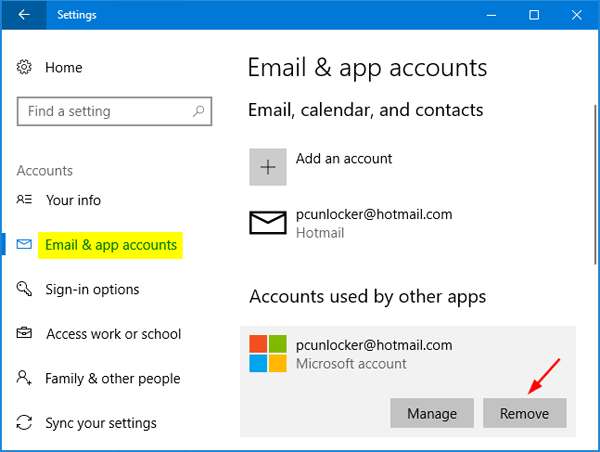
This message stopped me from configuring my Exchange account with the Windows 10 Mail, Calendar, and People apps. There’s already an account set up to use. When trying to add, I was presented with: After joining the Surface to my domain, and attached my Microsoft account, I went to add my Exchange account (which is the same e-mail address I use for my Microsoft account).

Recently, I did a fresh install of Windows 10 on my Microsoft Surface Pro. While many people use or addresses, some of us prefer to use our actual real e-mail addresses as Microsoft account logins. When you're done updating your settings, select Next > Done.If you’re like me, you probably have your Microsoft account configured the same as your e-mail address. This is also where you can update your email password (after you've changed the password with your email provider). Select either Incoming mail or Outgoing mail to change a variety of server settings.

The most common settings you'll change are Server Settings. Manage Profiles lets you add or remove profiles or change profile settings. Server Settings lets you change the login information, including the password, server name, port, and authentication settings.Ĭhange Profile lets you switch to a new profile. Select the type of information you want to change.Īccount Settings allows you to add or remove accounts, change server settings, and more.Īccount Name and Sync Settings lets you update the friendly name for the account and decide how many days' worth of email you'd like to synchronize. Use the dropdown under Account Information to select the account you want to change. Update or change your email settings in Outlook for Windows Your email should be properly configured. Click Close, and then click Next and Finish on the Change Account window. Green check marks indicate a successful test. If the test fails, contact your email provider to verify the information. Red markers indicate some or all settings are incorrect. On the Test Account Settings window, check if you have green check marks or red markers: If they don't match, manually change them.Īdditionally, compare the encryption types (next to Use the following type of encrypted connection) for both Incoming and Outgoing servers as well and, if they don't match, manually change them.Ĭlick OK, and then click Test Account Settings on the Change Account window. Under Server Port Numbers, compare the Incoming server (IMAP) and Outgoing server (SMTP) numbers to those provided by your email provider or from the reference article.

On the Internet Email Settings window, select the Advanced tab. Note: If your email provider requires two-factor authentication, enter the generated passcode they provided instead of your regular password.


 0 kommentar(er)
0 kommentar(er)
